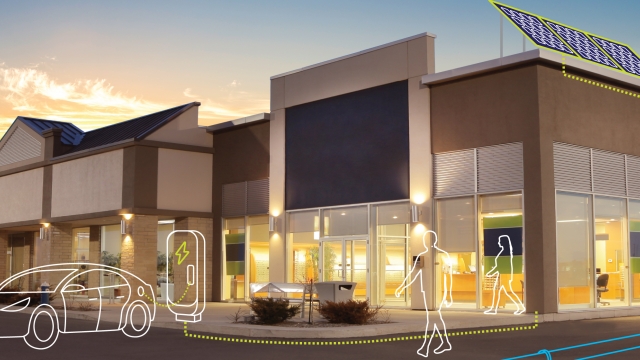
Self-Generation Incentive Program
Find out how you may be able to benefit from the Self-Generation Incentive Program.
Find out how you may be able to benefit from the Self-Generation Incentive Program.
The Self-Generation Incentive Program (SGIP) provides incentives for residential and commercial customers installing qualifying distributed energy resources (DERs) on the customer’s side of the utility meter. Through increased deployment of DERs, SGIP aims to improve the overall efficiency of the electric distribution and transmission system.
For over twenty years, SGIP has made a positive impact on California’s energy grid by enabling projects that provide baseload generation, load shifting and resiliency options for SoCalGas customers.
Generation projects include a variety of technologies that generate electricity using 100% renewable fuel (on-site biogas, directed biogas or hydrogen).
| Incentive Type | Generation Budget |
|---|---|
| Base Incentive | $2.00/W |
| Resiliency Adder | $2.50/W |
| California Manufacturer Adder2 | 20% |
Generation project incentives are paid up to 3MW of rated capacity (not to exceed $5 million cap per site) with tiered incentive rates. For projects that are greater than 1MW, incentives decline according to the following schedule:
| Rated Capacity (MW) | Percentage of Base incentives |
|---|---|
| 0-1 MW | 100% |
| >1 MW -2 MW | 75% |
| >2 MW -3 MW | 50% |
| >3 MW | 0% |
For program rules, visit the SGIP Handbook.
Energy storage projects include a variety of technologies that store energy that can later be discharged to shift demand away from peak periods.
| Incentive Type | Large-Scale Energy Storage Budget | Equity Energy Storage Budget | Equity Resiliency Energy Storage Budget | Small-Residential Energy Storage Budget |
|---|---|---|---|---|
| Equipment Incentive | $0.18 - $0.25/Wh | $0.85/Wh | $1.00/Wh | $0.15/Wh |
| Resiliency Adder | Additional $0.15/Wh | N/A | N/A | N/A |
| California Manufacturer Adder2 | 20% | 20% | 20% | 20% |
Energy storage incentives are paid up to 6 MWh of capacity with tiered incentives rates. For energy storage projects that are greater than 2 MWh, incentives decline according to the following schedule:
| Energy Capacity (MWh) | Percent of Base Incentive |
|---|---|
| 0 to 2 MWh | 100% |
| > 2 MWh - 4 MWh | 50% |
| > 4 MWh - 6 MWh | 25% |
Storage incentives are reduced as the duration energy storage (Wh) increases in relation to the rated capacity (W) according to the following schedule. The duration step-down incentive structure to the following schedule:
| Discharge Duration (hours) | Percent of Base Incentives |
|---|---|
| 0 to 2 hours | 100% |
| Greater than 2 hours to 4 hours | 50% |
| Greater than 4 hours to 6 hours | 25% |
| Greater than 6 hours | 0% |
| Discharge Duration (hours) | Percent of Base Incentives |
|---|---|
| 0 to 2 hours | 100% |
| Greater than 2 hours to 4 hours | 100% |
| Greater than 4 hours to 6 hours | 50% |
| Greater than 6 hours | 0% |
SGIP budgets and eligibility vary depending on customer types and project site location. For example, technologies installed at a project site determined to be a critical facility may be eligible for the Resiliency Adder in the Generation Budget, Large-Scale Energy Storage Budget, or the Equity Resiliency Energy Storage Budget. A full list of customer types and budget eligibility pathways can found in the SGIP Handbook.
The SGIP budgets and eligibility are:
Any project installing a qualifying generation technology behind the customer meter are eligible for the Generation Budget.
Customers eligible for the $2.50/W Resiliency Adder must meet the following criteria:
All qualifying generation systems are expected to operate at the following capacity factors.
With the exception of wind turbines, all generation technologies are expected to operate at a capacity factor that aligns with the intended operation. Systems intended to operate to offset a customer’s baseload generation needs are expected to operate at an 80% capacity factor. Systems intended to operate as a dispatchable generation resource to firm on-site renewables, provide peak load shaving, and/or support flexible load are expected to operate at a 15% capacity factor.
Residential projects not eligible for the Equity Resiliency Energy Storage Budget or Equity Energy Storage Budgets and installing a system size 10kW or less may be eligible for the Small-Residential Energy Storage Budget.
Residential projects sites installing a system size greater than 10kW are eligible for the Large-Scale Storage Budget. Commercial projects not eligible for the Equity Resiliency Energy Storage Budget or Equity Energy Storage Budgets is eligible for the Large-Scale Energy Storage Budget
For additional assistance, please email us at selfgeneration@socalgas.com